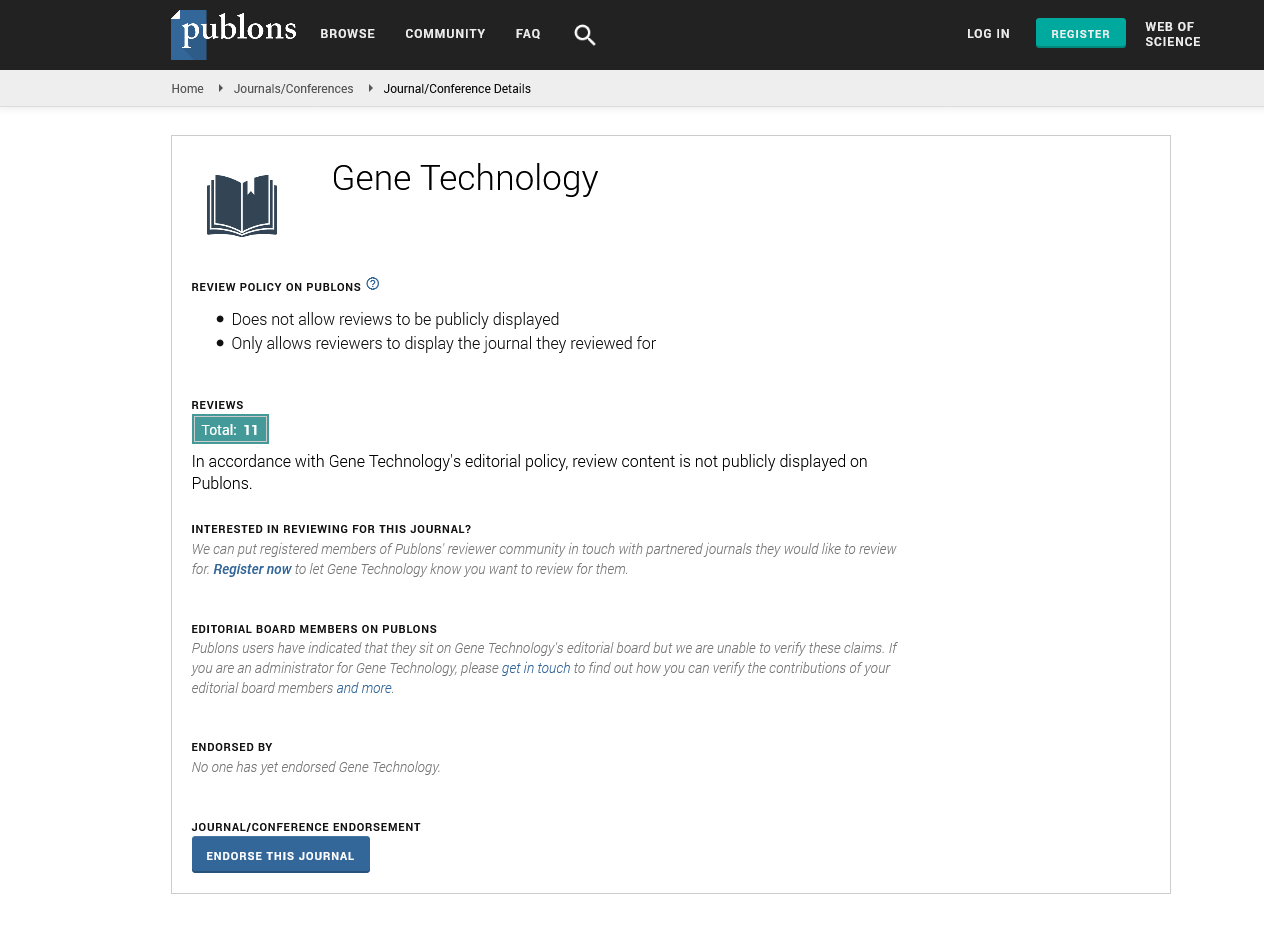PMC/PubMed Indexed Articles
Indexed In
- Academic Keys
- ResearchBible
- CiteFactor
- Access to Global Online Research in Agriculture (AGORA)
- RefSeek
- Hamdard University
- EBSCO A-Z
- OCLC- WorldCat
- Publons
- Euro Pub
- Google Scholar
Useful Links
Share This Page
Journal Flyer

Open Access Journals
- Agri and Aquaculture
- Biochemistry
- Bioinformatics & Systems Biology
- Business & Management
- Chemistry
- Clinical Sciences
- Engineering
- Food & Nutrition
- General Science
- Genetics & Molecular Biology
- Immunology & Microbiology
- Medical Sciences
- Neuroscience & Psychology
- Nursing & Health Care
- Pharmaceutical Sciences
Perspective - (2022) Volume 11, Issue 1
Brief Note on Marked Assisted Breeding
Gilbert Daniel*Received: 01-Feb-2022, Manuscript No. RDT-22-16121; Editor assigned: 03-Feb-2022, Pre QC No. RDT-22-16121 (PQ); Reviewed: 17-Feb-2022, QC No. RDT-22-16121; Revised: 21-Feb-2022, Manuscript No. RDT-22-16121 (R); Published: 28-Feb-2022, DOI: 10.35248/2329-6682.22.11.183
Description
Marker assisted breeding uses DNA markers associated with the desired trait to select a plant or animal early in its development for inclusion in the breeding program.
This approach significantly reduces the time required to identify varieties or varieties that exhibit the desired characteristics in a breeding program. A marker can be a sequence of genes that determine a trait, but in most cases it is a DNA sequence that is very close to the gene of interest and is always inherited with the trait. Desirable traits include disease resistance, salt tolerance, high yield and other traits.
Marker Assisted Selection (MAS) can be defined as the manipulation of genomic regions involved in traits of interest via DNA markers, and its potential use for improving crops heralds a new era of molecular breeding. MAS is superior to visual phenotypic selection because the trait of interest is linked to molecular markers that increase the efficiency of target trait selection.
The basic goal of the crop improvement program is to select effective crops with the traits of interest. Traditional plant breeding often skips traits of interest, delaying the time to develop new varieties with the desired traits. MAS, on the other hand, has demonstrated its usefulness in crops for enhancing a variety of traits by reducing its impact on the environment and increasing the efficiency of selection of traits of interest.
Various markers such as morphological (trait-specific), proteinaceous (isozyme), cytological (chromosome-specific) and DNA markers have been used for plant breeding. Recent advances in molecular breeding, such as the use of PCR-based methods Simple Sequence Repeats (SSR) and indel mutations (Indels)]; Single Nucleotide Repeats (SNPs) and Genomic Sequencing (GS) are widely used in crop improvement programs worldwide.
Molecular markers: The path to simple and reliable choices
Fixed traits of an individual showing hereditary changes are called characters or traits, but markers are inherited along with traits of interest throughout the generation. They can be defined as any characteristic. Markers can be divided into four main groups: morphological, biochemical, cytological and molecular (DNA-based) markers.
Morphological markers, also known as visual markers or phenotypic markers, are used for quality traits such as shape, size, colour, grain structure, growth behavior, and agronomic traits. These markers are environmental friendly; easy to use and does not require any specific tools; however, their numbers are limited in cultivated species and strongly influenced by prevailing environmental conditions.
Biochemical markers, primarily isozymes, are the result of changes in enzymes (protein and amino acid sequences) encoded by different genes, but are functionally the same. They are the end product of allelic mutations in the enzyme. They are codominant in inheritance, cheap and easy to use. They have been widely used in plant breeding to study gene flow, population structure, and genetic diversity. However, they are limited in number, have few polymorphisms, and are influenced primarily by the plant tissue used, the stage of growth, and the method of their extraction.
Molecular markers do not target genes, but rather inherit a "flag" with the gene of interest when passing a trait from one generation to the next. Molecular markers associated with proximity to genes of interest are known as genetic tags, i.e. association with target genes. The basic characteristics of an ideal marker are co-dominant inheritance, high degree of polymorphism, high reproducibility, whole genome, easy and rapid detection, neutrality to conditions environment, high resolution, low cost and whole genome.
The hybridization-based marker
DNA band is a labelled probe, i.e., DNA fragment of a known sequence that hybridizes to a DNA fragment digested by a restriction endonuclease enzyme. Restriction Enzyme Fragment Length Polymorphism (RFLP) was the first and last marker based on hybridization methods.
PCR-based marking
PCR-based marking uses primer-dependent PCR amplification and/or DNA hybridization, followed by electrophoresis. Polymorphism was detected based on the presence or absence of an amplicons or on band region size and mobility. The most commonly used PCR-based markers are Random Amplified DNA Polymorphism (RAPD), Amplified Fragment Length Polymorphism (AFLP), cytoskeleton or simple sequence repeat (SSR). Sequence-associated amplification polymorphism (SRAP), Simple Sequence Repeats (SSR), cleavage amplification of polymorphic sequences, sequence-characterized amplification region (SCAR).
Sequence-based markers
The sequencing technique is characterized by determining the nucleotide sequences and their order with the DNA strand. Sequence-based markers are designed to follow a specific DNA sequence within an unknown pool of DNA. Modern sequencing techniques are Genotyping By Sequencing (GBS) and Next-Generation Sequencing (NGS), which can develop a wide range of polymorphisms at the nucleotide level; however, the most commonly used markers are Single Nucleotide Polymorphism (SNP) and Diversity Array Technology Sequence (DArT Seq), which are known to be more accurate and reliable.
Citation: Daniel G (2022) Brief Note on Marked Assisted Breeding. Gene Technol. 11:183.
Copyright: © 2022 Daniel G. This is an open access article distributed under the terms of the Creative Commons Attribution License, which permits unrestricted use, distribution, and reproduction in any medium, provided the original author and source are credited.

